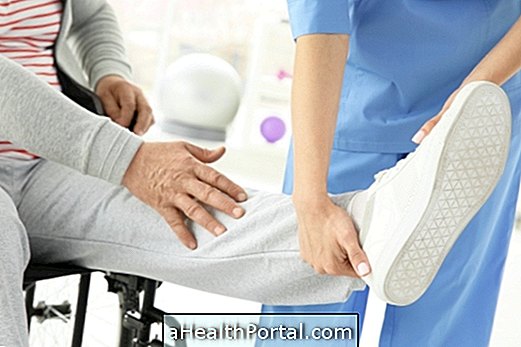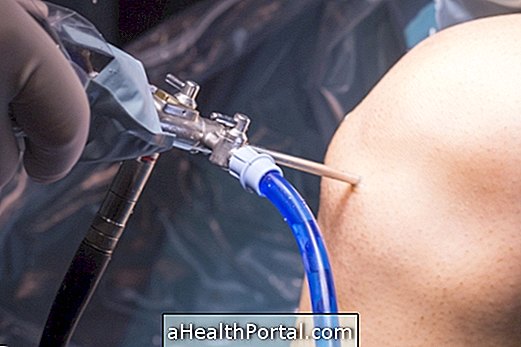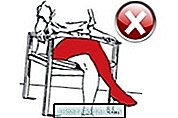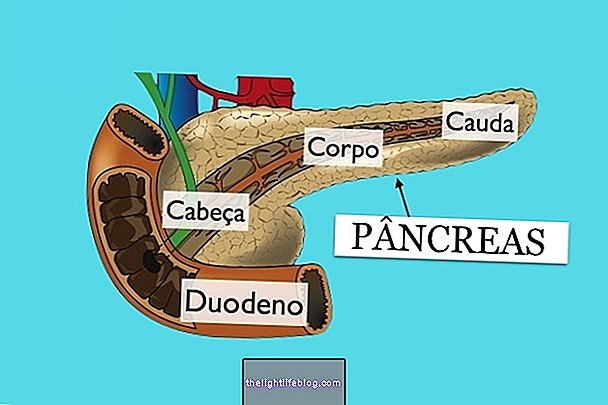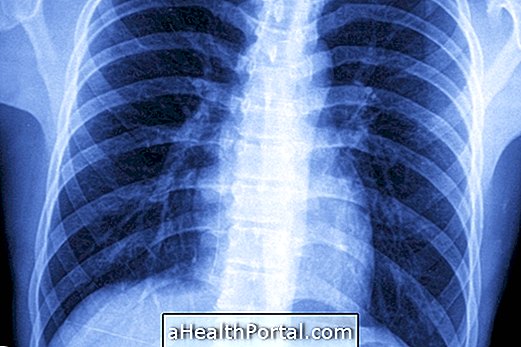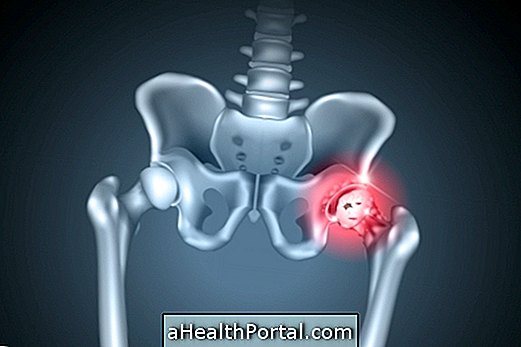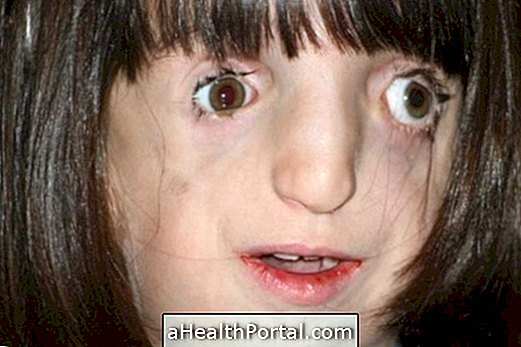Recovery after total knee arthroplasty is usually quick, but varies from person to person and the type of surgery performed.
The surgeon may indicate taking analgesics to relieve pain discomfort following surgery, and in the first 2 weeks after surgery a few steps should be followed, such as:
- 3 days without putting your foot on the ground, walking with the help of crutches;
- Apply ice, usually 20 minutes, 3 times a day, for 7 days to reduce pain and swelling;
- Bend and extend the knee several times a day, respecting the pain limit.
After 7 to 10 days, the surgery points should be removed.
How is physiotherapy after knee arthroplasty
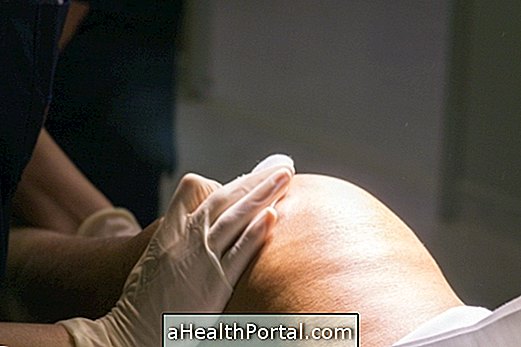
Rehabilitation of the knee should still begin at the hsopital but may take about 2 months until complete recovery. Here are some possibilities for treatment.
1. Physiotherapy in the hospital
Physiotherapy should be started as soon as possible and can start right after surgery, as it helps in recovery of knee mobility and reduction of swelling, as well as preventing thrombosis and pulmonary embolism.
The whole process of rehabilitation should be indicated by a physical therapist personally, respecting the individual needs of the person, but some guidelines of what can be done are indicated below.
Same day of surgery:
- Just remain lying down with your knee stretched, if you are without a drain, you can lie on your side, with a cushion between your legs for greater comfort and positioning of the spine;
- An ice pack may be placed on the operated knee for 15 to 20 minutes every 2 hours. If the knee is bandaged, ice should be applied for longer, staying up to 40 minutes on ice, at most 6 times a day.
The day after surgery:
- An ice pack may be placed on the operated knee for 15 to 20 minutes every 2 hours. If the knee is bandaged, apply ice for longer, staying up to 40 minutes on ice, at most 6 times a day;
- Ankle mobility exercises;
- Isometric exercises for the thighs;
- You can stand and support the foot of the operated leg on the floor, but without putting the weight of the body on the leg;
- You can sit and get out of bed.
On the 3rd day after surgery:
- Maintaining isometric exercises for the thighs;
- Exercises to bend and stretch the leg still in bed, and also sitting;
- Begin to train using the walker or crutches.
After these 3 days the person is usually discharged from the hospital and can continue physical therapy in a clinic or at home.
2. Physiotherapy in the clinic or domicile

After discharge the physical therapy treatment must be indicated personally by the physiotherapist who will accompany the person, according to their evaluation, indicate what can be done to improve the movement of the leg, to be able to walk, to go up and down stairs and to return daily activities. However, this treatment can be done with, for example:
- Exercise bike for 15 to 20 minutes;
- Electrotherapy with TENS for pain relief, and Russian current to strengthen the thigh muscles;
- Mobilization of the joint made by the physiotherapist;
- Exercises to bend and stretch the knee performed with the help of the therapist;
- Exercising mobilization, contracting and relaxing with the help of the therapist;
- Stretching for the legs;
- Exercises to strengthen the abdomen to help balance and maintain good posture;
- Staying on top of a balance board or bosu.
After approximately 1 month of physical therapy the person should be able to support all body weight on the operated leg, walking without limping or fear of falling. Standing on one foot and crouching on one foot should only be achieved from approximately the 2nd month.
At this stage, the exercises can become more intense by putting pesinhas and you can start the training to get up and down stairs, for example. After a few weeks, some exercises that may be helpful will be to change directions when climbing stairs, or even, climbing stairs, for example.
Physiotherapy should not be exactly the same for two people who performed the same type of surgery because there are factors that interfere with recovery, such as age, sex, physical ability, and emotional state. Thus, it is best to rely on the physiotherapist who has and follow his advice for a faster rehabilitation.
